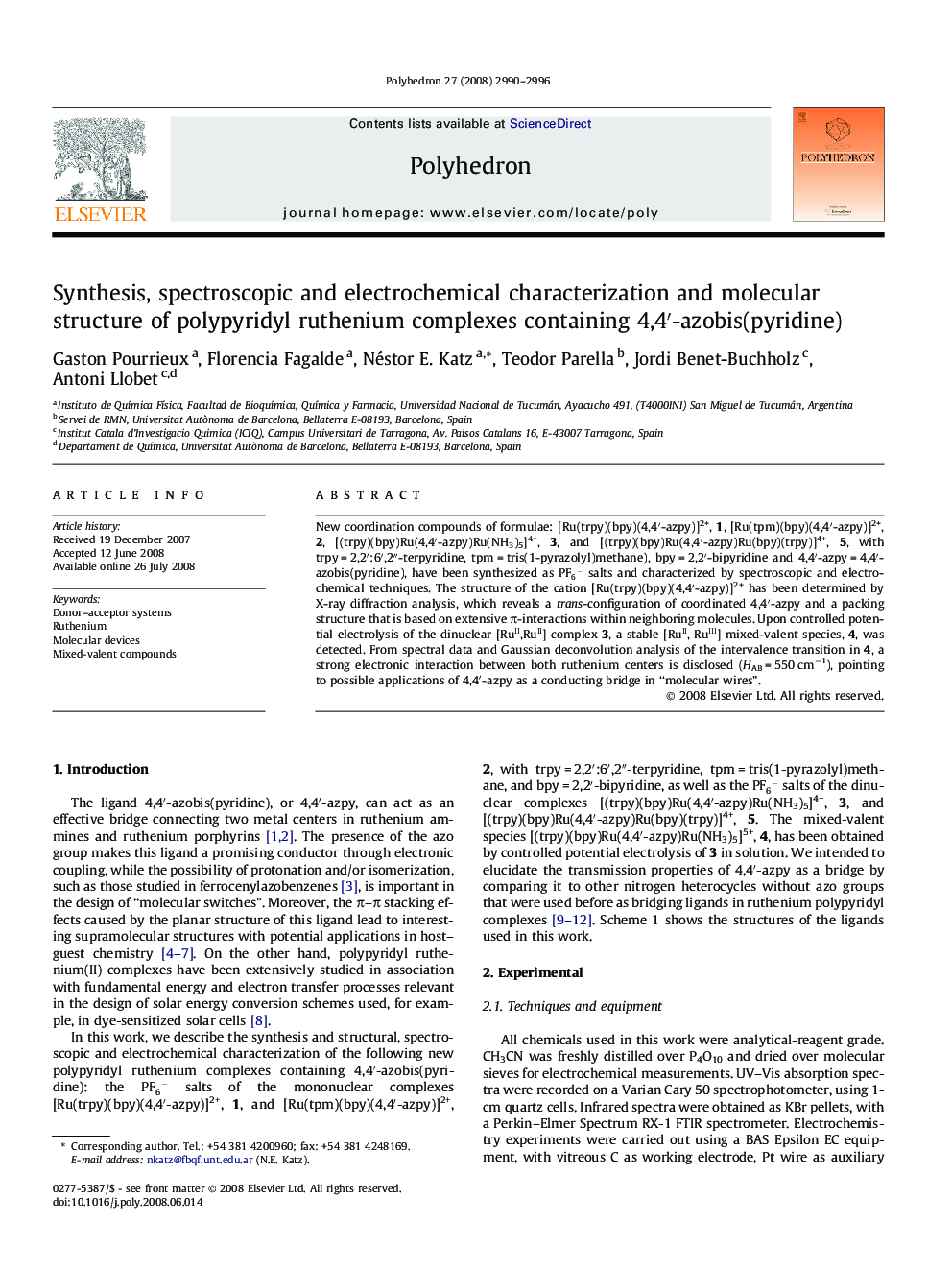| Article ID | Journal | Published Year | Pages | File Type |
|---|---|---|---|---|
| 1340368 | Polyhedron | 2008 | 7 Pages |
New coordination compounds of formulae: [Ru(trpy)(bpy)(4,4′-azpy)]2+, 1, [Ru(tpm)(bpy)(4,4′-azpy)]2+, 2, [(trpy)(bpy)Ru(4,4′-azpy)Ru(NH3)5]4+, 3, and [(trpy)(bpy)Ru(4,4′-azpy)Ru(bpy)(trpy)]4+, 5, with trpy = 2,2′:6′,2″-terpyridine, tpm = tris(1-pyrazolyl)methane), bpy = 2,2′-bipyridine and 4,4′-azpy = 4,4′-azobis(pyridine), have been synthesized as PF6- salts and characterized by spectroscopic and electrochemical techniques. The structure of the cation [Ru(trpy)(bpy)(4,4′-azpy)]2+ has been determined by X-ray diffraction analysis, which reveals a trans-configuration of coordinated 4,4′-azpy and a packing structure that is based on extensive π-interactions within neighboring molecules. Upon controlled potential electrolysis of the dinuclear [RuII,RuII] complex 3, a stable [RuII, RuIII] mixed-valent species, 4, was detected. From spectral data and Gaussian deconvolution analysis of the intervalence transition in 4, a strong electronic interaction between both ruthenium centers is disclosed (HAB = 550 cm−1), pointing to possible applications of 4,4′-azpy as a conducting bridge in “molecular wires”.
Graphical abstractNew mononuclear and dinuclear polypyridyl ruthenium(II) complexes containing 4,4′- azpy have been synthesized and characterized by spectroscopic, X-ray diffraction and electrochemical techniques. In the mixed-valent asymmetric complex with pentaammineruthenium(III) as an electron acceptor, a relatively strong metal–metal coupling is disclosed, pointing to possible applications of 4,4′-azpy in “molecular wires”.Figure optionsDownload full-size imageDownload as PowerPoint slide
